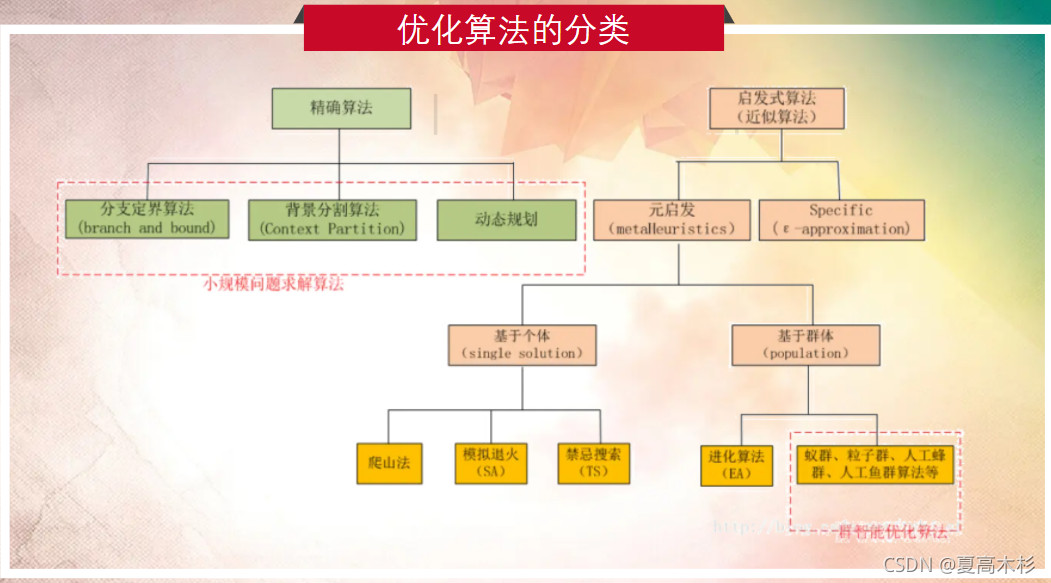分布式系统性能优化秘籍:模拟退火算法的应用
发布时间: 2024-08-24 20:53:14 阅读量: 32 订阅数: 36 


# 1. 分布式系统性能优化概述**
分布式系统因其高可用性、可扩展性和灵活性而广泛应用于现代IT架构中。然而,随着系统规模和复杂性的增加,性能优化变得至关重要。
性能优化旨在通过调整系统配置、优化代码和算法,以及采用适当的优化策略,提高分布式系统的响应时间、吞吐量和资源利用率。分布式系统性能优化涉及多个方面,包括负载均衡、资源分配、缓存管理和故障恢复。
在优化过程中,需要考虑分布式系统固有的挑战,例如网络延迟、数据一致性和容错性。通过采用合适的优化技术和算法,可以有效地解决这些挑战,从而提高分布式系统的整体性能和可靠性。
# 2. 模拟退火算法理论基础**
## 2.1 模拟退火算法原理
模拟退火算法是一种受物理学中退火过程启发的随机搜索算法。它模拟了固体材料在加热和冷却过程中原子重新排列的过程,以达到能量最低的状态。在分布式系统性能优化中,模拟退火算法可以用来寻找最优的系统配置,从而提高系统性能。
模拟退火算法的核心思想是:在每次迭代中,算法会随机生成一个新的系统配置。如果新配置的性能优于当前配置,则算法会接受新配置并将其作为当前配置。如果新配置的性能不如当前配置,则算法会以一定概率接受新配置。这个概率随着算法进行而逐渐降低,就像固体材料在冷却过程中原子重新排列的概率逐渐降低一样。
## 2.2 模拟退火算法参数设置
模拟退火算法的性能受以下参数的影响:
- **初始温度:**算法开始时的温度。初始温度越高,算法探索搜索空间的能力越强,但找到最优解的可能性越低。
- **降温速率:**算法在每次迭代中降低温度的速度。降温速率太快,算法可能会收敛到局部最优解;降温速率太慢,算法可能需要很长时间才能找到最优解。
- **接受概率:**算法接受性能较差的新配置的概率。接受概率太高,算法可能会陷入局部最优解;接受概率太低,算法可能无法找到最优解。
以下代码块展示了模拟退火算法的基本实现:
```python
import random
def simulated_annealing(problem, initial_temperature, cooling_rate, acceptance_probability):
"""
模拟退火算法
参数:
problem:优化问题
initial_temperature:初始温度
cooling_rate:降温速率
acceptance_probability:接受概率
"""
# 初始化当前配置
current_solution = problem.get_initial_solution()
# 循环直到达到停止条件
while not problem.is_termination_condition_met():
# 生成新配置
new_solution = problem.generate_new_solution(current_solution)
# 计算新配置的性能
new_cost = problem.evaluate_solution(new_solution)
# 计算当前配置的性能
current_cost = problem.evaluate_solution(current_solution)
# 如果新配置的性能优于当前配置,则接受新配置
if new_cost < current_cost:
current_solution = new_solution
# 否则,以一定概率接受新配置
else:
acceptance_probability = acceptance_probability * cooling_rate
if random.random() < acceptance_probability:
current_solution = new_solution
# 降低温度
initial_temperature = initial_temperature * cooling_rate
# 返回最优配置
return current_solution
```
**代码逻辑分析:**
- 函数 `simulated_annealing` 接受优化问题、初始温度、降温速率和接受概率作为参数。
- 函数初始化当前配置为优化问题的初始配置。
- 函数循环执行,直到达到停止条件。
- 在每次迭代中,函数生成一个新的配置并计算其性能。
0
0





